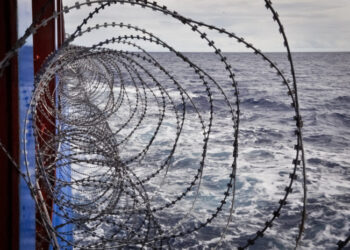A recent report by Risk Intelligence looks at three aspects that ship operators should take into consideration for any type of operation in the Gulf of Guinea: the distance of high-profile attacks from the Niger Delta, differences between daytime and nighttime attacks, and increasing concerns among seafarers.
Several piracy incidents in recent months, particularly kidnappings of seafarers, have highlighted the threats to commercial shipping in the Gulf of Guinea.
While the situation has not escalated out of control as some reports have suggested, some trends are major concerns for crews on merchant vessels operating in the region.
In the Gulf of Guinea, all types of ships may come under attack, while successful boardings in recent months have even taken place on vessels underway with a substantial freeboard. Moreover, while attacks remain more likely closer to the Niger Delta, the threat has spread to large parts of the Gulf of Guinea, affecting countries from Ghana to Gabon.
Attacks in Gulf of Guinea
According to Risk Intelligence, between 2016 and mid-2019, almost all successful and failed kidnap-for-ransom attacks in the area took place relatively close to the southern and western Niger Delta. The average distance of attacks from the Niger Delta then increased significantly in the last quarter of 2019, while during 2020, attacks took place both close to Nigeria but also at significant distances from the Niger Delta coastline, affecting countries from Togo to Gabon.
The most concerning trend for merchant shipping in the Gulf of Guinea has been the spread of attacks over a larger area
the report notes.
Moreover, this is not the first time that criminal groups from Nigeria have conducted operations throughout the Gulf of Guinea. Similar patterns have been observed between 2010 and 2016. At the same time, attacks aimed at kidnapping seafarers are still carried out by Niger Delta-based groups.
Night time attacks
Successful attack are much more likely during hours of darkness. Moreover, at least some of the successful attacks during daytime are suspected to be linked with other illicit activities.
For this reason, it is very likely that the respective ships were not targeted at random during the day.
The higher success rate of attackers at night can largely be attributed to the fact that crew members are more likely to detect hostile speedboats early during the day.
This early detection allows for more time to increase speed and carry out evasive manoeuvres, while all crew members can also gather in the citadel to wait for a naval response.
Seafarers are concerned
The last two years, the number of reports about activities that were at least perceived as suspicious has risen significantly.
This is a clear indication that crews on merchant vessels operating in the region are increasingly concerned about potential attacks
Risk Intelligence says.
In many cases that have been reported by other organisations, it has also been obvious that these were related to normal patterns of life in the region, for example to widespread fishing activities.






























































